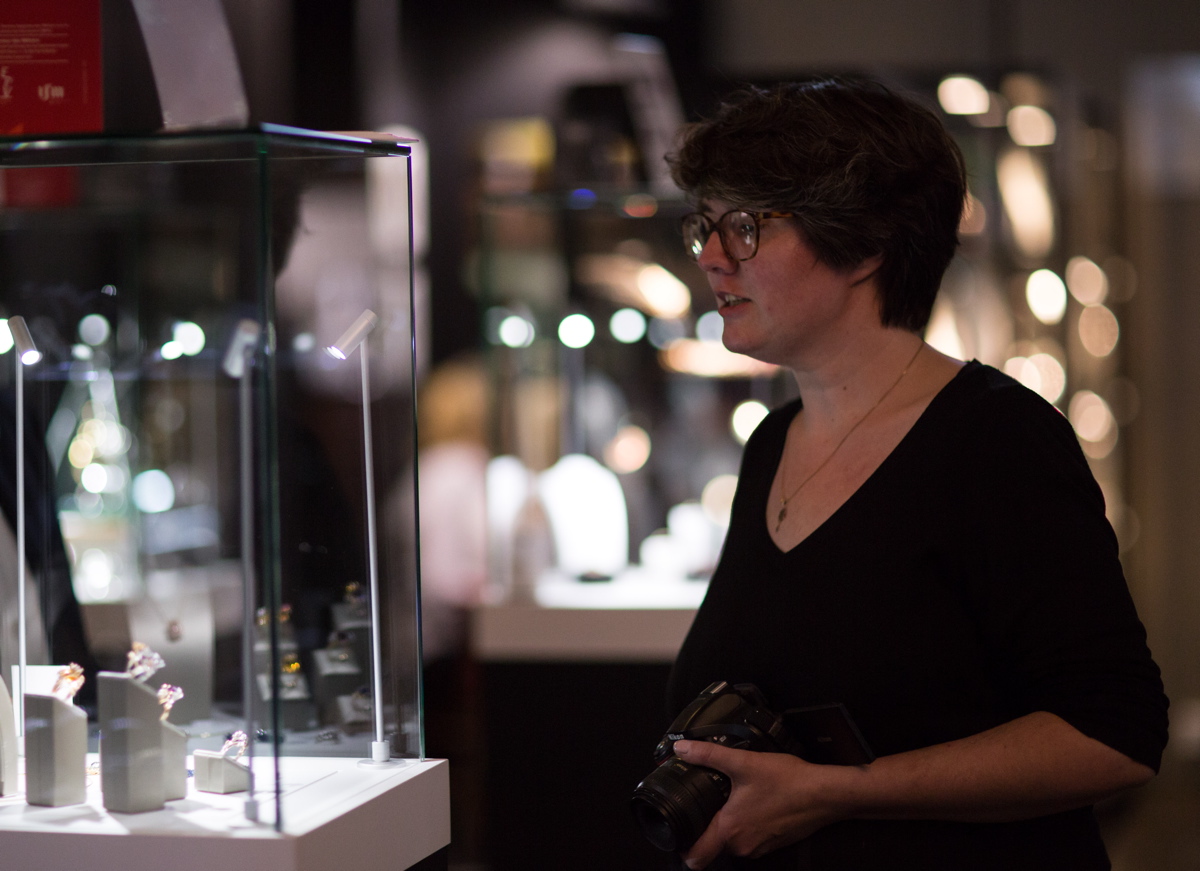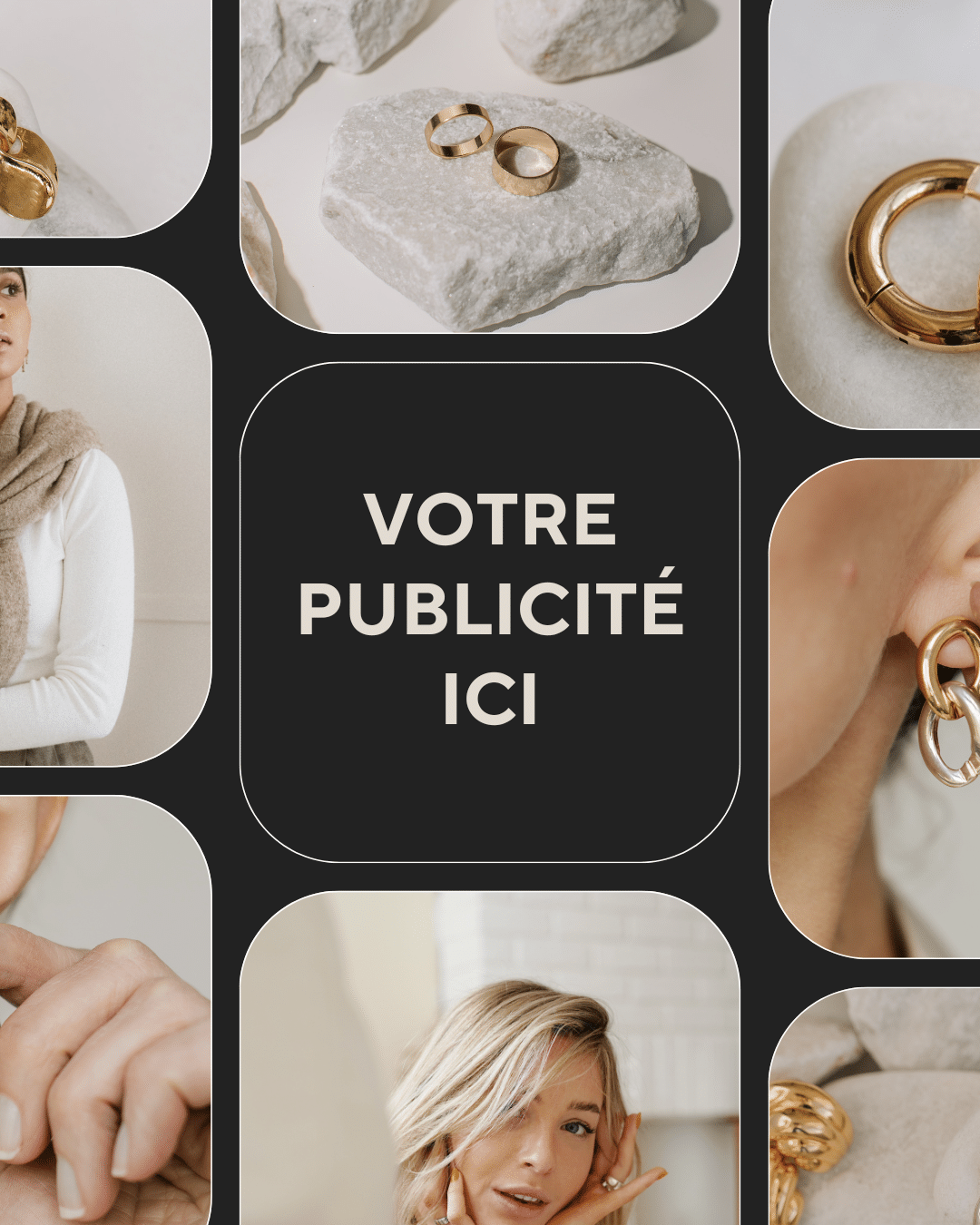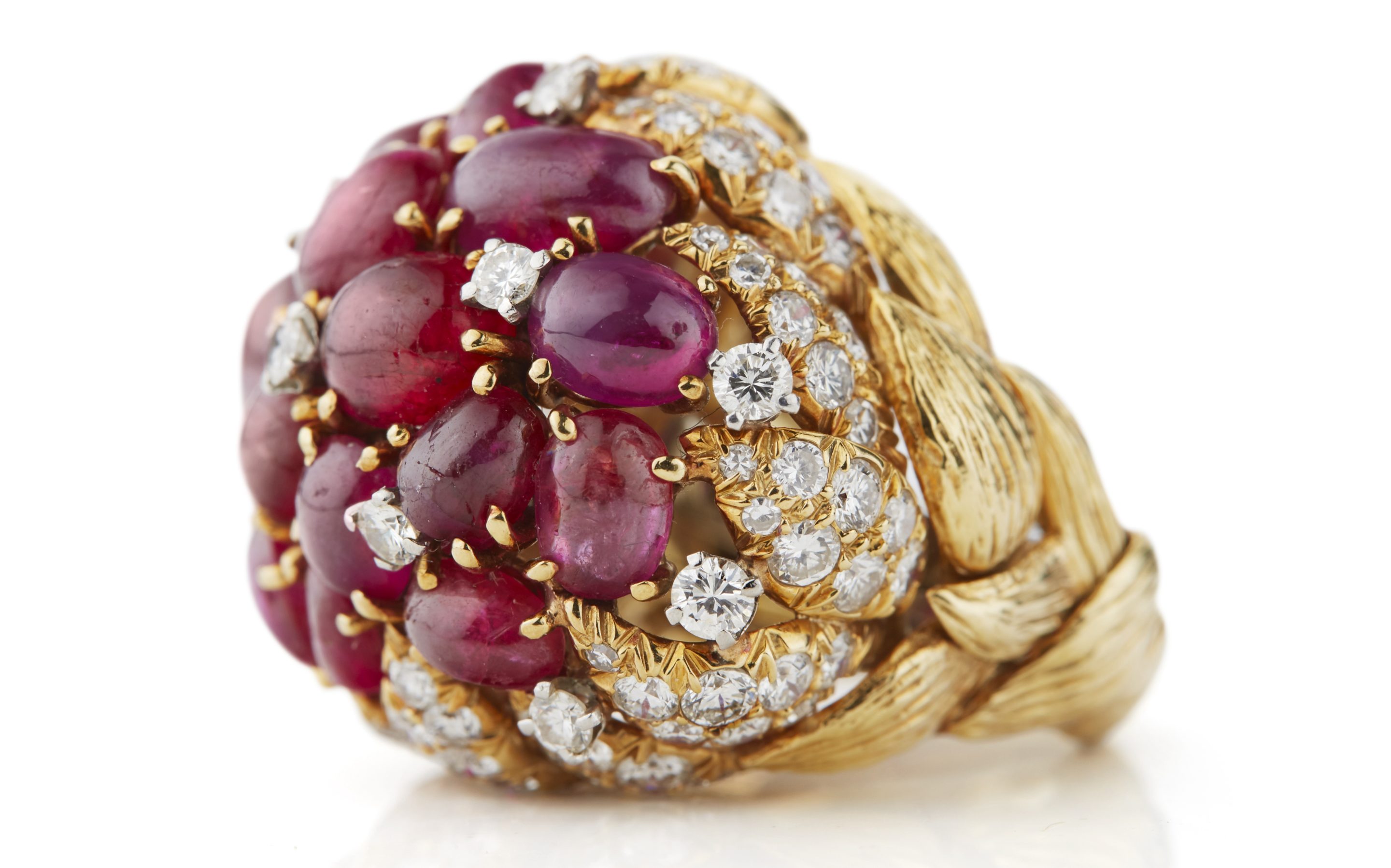9 wonders because I stopped and had to choose. And to choose is to give up… Here we are, my favourite time of the year is starting, that of the beautiful auctions in France and Europe, and at this time of year, I’m out and about a lot… I’m always on the lookout for the best presentations, I’m always pulling out my magnifying glass, I’m always scrutinising the jewellery down to the smallest detail, and I’m always in for a treat! At Aguttes, a great sale is coming up, with 199 lots, all very different and exciting. I’ve chosen 9 of them, and I hope you’ll find them as enchanting as they made my eyes sparkle!
1- A dreamed piece of 19th century jewellery

18k (750) gold, enamel and opals. French work – 19th century
Mahler Palais Royal case. Estimate between 4000 and 6000 euros. Photo: Aguttes
Sometimes, there are pieces that leave a strong impression on you because you found them beautiful when you first saw them. In Spain in 2010, a bracelet exactly like the one on display made quite an impression on me. The only difference was that the medallions were separated by small emeralds. Hence my surprise to discover its twin.
This piece is fairly typical of 19th-century jewellery celebrating the rediscovery of Antiquity in all its imaginary splendour. With the rediscovery of Greece, the great excavations at Delphi and Troy awakened everyone to the importance of Hellenistic civilisation. Archaeological sites were reproduced and published in the press.
The grandiose buildings, timeless motifs and modern forms and objects rediscovered by the first archaeologists were a source of great excitement. The nineteenth century was also the century of the Grand Tour, of fantasies about Italy, ancient ruins and history. Fashion could not ignore this widespread infatuation and came up with its own interpretations. Jewellery, of course, has a front-row seat and is tinged with neoclassicism, mixing all kinds of inspirations!
The bracelet I’m talking about today arrives in a jewellery box from Mahler, a jeweller based at 122-123 Galerie de Valois in the Palais Royal, which can be traced back to around 1870. This district is known for its watchmakers, such as Leroy, and jewellers. Boucheron began its history here…
2- The elegance of emotional jewellery
I’ve always loved jewellery with a real soul, and mourning jewellery and, more broadly, sentimental jewellery, clearly fall into this category. Imagine a time before photography, when the only mementos of the living were portraits or a funeral urn (if you had enough money), possibly preserved elements of the human body (hair and sometimes teeth) and, in the best of cases, depending on the European country, a tombstone.
Nowadays, we preserve the memory of life by piling up thousands of photos in our phones and sending each other thousands of messages via WhatsApp, but almost two centuries ago, things were very different… Lot 17 is a mourning ring, recognisable by its diamond-set funeral urn. Lot 18 is the symbol of a couple’s mourning, and the ring was possibly intended for one of the couple’s children. On this last lot, you will note the symbol of a “love” knot or tied ribbon, the symbolism of which testifies to the couple’s attachment. The tighter the knot, the more intense the love!
If you’re curious, you might like to know who the Reverend Andrew Alfred Daubeny and his wife Frances Elisabeth (whose death appears to date from 1878 and not 1869 as written on the ring, but clerical errors were so common in those days…) were: a couple renowned in their community in Somerset, England. Both their names appear in the cemetery of St Andrew’s Church in Backwell. The family seems to have lived in the beautiful Backwell House, which is now a hotel. The rest is up to you to investigate…
3- Do you know Beaumont & Cie?

“Draperie” necklace that can also be worn as a tiara or “Noeud” brooch
18k (750) gold and platinum (850)19th century
Shaped case signed Beaumont & Cie. Photo: Aguttes
Sometimes I wish I had long hair so I could put it up in a huge bun and wear an accessory that I think is really chic: a comb! Like the one in lot 35. Platinum, gold and diamonds, which puts it firmly in the late 19th or early 20th century. The set can be completely transformed, with day and evening jewellery in a single case. The all-in-one jewellery set that jewellers have always been so good at!
There’s no hallmark to identify it, but this piece arrives in a shaped case from Beaumont & Cie. Have you heard of them? Probably not! Originally, there was a Lyon jeweller called Agricol (and not Agricole, as is often written) Beaumont, a rare first name that was nevertheless quite common in 19th-century Lyon. This jeweller was established in 1836. He died in 1871. From 1868, his son Jean-Marie took over his father’s business until it changed name in 1896 to Beaumont & Cie. This fits in well with the date of our convertible comb/necklace. Since then, the company has evolved and remains a very fine Lyon-based business that you may know as Beaumont & Finet, which took its name in 1956.
On this type of object, I love the delicate volumes and the je-ne-sais-quoi that this kind of piece gives to an elegant woman’s look.
4- “One flower does not a garland make”

Rose-cut and old-cut diamonds 18k (750) gold and silver (<800) Set with transformation – 19th century, estimated at between €15,000 and €25,000. Photo : Aguttes
This quotation from a 17th-century work is quite appropriate for this remarkable piece of jewellery. Remarkable in its opulence and size, almost 14 centimetres of flowers and foliage all covered in diamonds, which must have made those who admired them wonder who was wearing them! Yes, because such an object is not insignificant. Sitting scrupulously in the hollow of a bodice, this jewel doesn’t play any tricks, and neither did the woman who was supposed to wear it!
But take the time to turn it over and admire every detail. Modular and transformable, this piece is a technical marvel. The goosenecks allow you to play with the tassels, and the jewel can be transformed to suit the moods and obligations of the woman who was its guardian… As for flowers, they can be worn in the hair or in a hat, allowing for all kinds of combinations.
We know of many pieces with such an aesthetic, completely rooted in the 19th century. There are many photos and portraits of women all over the world wearing this kind of brooch. Although this brooch is mobile, it is not mounted as a trembleuse, but it nevertheless reflects the desire of jewellers of the period to play with the light that appears in interiors as the electricity fairy illuminates everything!
5- Swing!

Eight-eighth-cut diamonds and black enamel 18k (750) gold Circa 1920. Estimated between 500 and 800 euros. Photo: Aguttes
It may be microscopic, but this pin representing a golfer at the turn of the 1920s is truly elegant. Admittedly, his club isn’t exactly dashing, but nothing a skilled jeweller can’t handle.
Golf became a gentleman’s sport reserved for a certain bourgeoisie and aristocracy in the 19th century. But it wasn’t until the 1920s that a particular fashion took hold of the sport. In 1924, a certain Edward VIII arrived in the USA on a diplomatic trip. Journalists of the time noted his taste for plus-fours, the famous, terribly comfortable wide-legged trousers that had appeared in the 19th century and were to become the emblem of golfers in the Roaring Twenties. Or Tintinophiles. It all depends.
Numerous jewellery houses offered jewellery of this type, celebrating a certain art-de-vivre in which golf and the advent of the motor car were widely represented. I’m thinking in particular of Tiffany, who produced a very similar brooch that bears a striking resemblance to our current piece. Ours will remain anonymous, but it will brighten up the tweet jacket of its future owner. And it’s not Le Roi or Faucon or l’Ours d’Or who would have said otherwise!
6- Onyx and the 20s

Round diamonds and onyx, platinum (850)
Around 1920. Estimated at between €2,500 and €3,000. Photo: Aguttes
As Art Nouveau faded, designers put their ideas back into order, and the post-First World War period paved the way for a simplified, geometric, orderly jewellery style in which contrasts and colours offered new harmonies. Onyx and rock crystal clashed in platinum pieces. Jewellers are exploring new creative territories where opposites become natural, initiating a new artistic language.
Tassel earrings became a staple of women’s wardrobes. As outfits became shorter, dresses lighter and Jeanne-Florentine Bourgeois aka Mistinguett set the dancefloor alight, jewellery became mobile and playful. Earrings lengthened into pendants as fine as they were delicate. Ornamental stone pendants – onyx, coral, lapis lazuli – took over jewellers’ windows and were embraced by women the world over. Jazz resonated in the clubs, and Lindy Hop and the Charleston shook up the older generation. The old world may not be so far away, but the new one is definitely here!
7- The precious object according to Cartier

Cigarette case Black lacquer, rose-cut diamonds
Vermeil, 18k (750) gold Signed, numbered – Stoederum & Ruthenburg hallmark
Around 1925. Estimate between 800 and 1200 euros. Photo: Aguttes
TheCartier object has been a source of admiration for many, many years. Anyone who loves jewellery is bound to have fallen in love with a Cartier object at some point. Whether they are extraordinary, even totally improbable, or on the contrary, as with lot 57, smaller, simpler and cut for everyday life, there is bound to be a Cartier object made for you.
My dream is to have a little box from the famous house to keep my treasures in. I find this object a little decadent, but I often tell myself that I wasn’t born in the right era. Like the combs, I find that the necessaire, the case and the box are all pieces that I can easily describe as magical. Made from gold and lacquer, the case is a cigarette box. As is sometimes the case, it combines vermeil, gold and even a little platinum. Made in 1925, it echoes the Asian imagination. In contrast to the rigour of Cubism, chinoiserie from this period was an escape into a wonderful, fantasised world.
The hallmark reveals a more discreet company. It was the Stoederum & Ruthenburg workshop. Founded in 1919 as the successor to Benjamin Wollès, this workshop specialised in smokers’ articles. Almost nothing exists about them, and few pieces with this hallmark are known. Although there are a few mentions in the press at the time, they say little about the reality of the work carried out by this workshop, whose delicate object you have before you.
8- The starfish according to Tiffany & Co.

Pair of ear clips and brooch; Coral beads
Silver (<800) and 18k (750) gold Signed, circa 1993. Estimate between 500 and 1000 euros. Photo: Aguttes
I’ve been looking forward to Tiffany & Co. jewellery for a long time. This model from the 1990s is a classic from the American company. This dancing starfish with its generous volume is a call to good humour.
As far as I know, the starfish appeared in the collections of the brand with the turquoise boxes in the 1950s. Jean Schlumberger used it in all sorts of shapes, designs and volumes, according to his overflowing imagination. We know it in emeralds and rubies, in tourmalines and sapphires, in brushed, matt or shiny gold. It is as small as it is invasive, offering a thousand colours in versions that even nature could not have imagined.
It appeared in numerous advertisements, in 1958 set with stones, and in 1962 with turquoise and coral. Schlumberger had already begun designing for the brand in 1956, inaugurating a fruitful partnership. His home in the islands is a never-ending source of inspiration for this prolific designer.
With the arrival of Elsa Peretti, the starfish became more organic and graphic. By simplifying its volumes to the extreme, the designer returns to the line and sublimates the contours of this somewhat mysterious animal… She then applied it to both metal and glass. Perhaps making it more poetic. The designer Sonia Younis also uses it, as shown by a magnificent two-tone bracelet from the 1970s.
So the starfish is everywhere at Tiffany. The design of this model sums up the codes of all the designers who have one day become the company’s artistic directors. To try it is to adopt it. So...make a wish upon a starfish!
See you soon!









